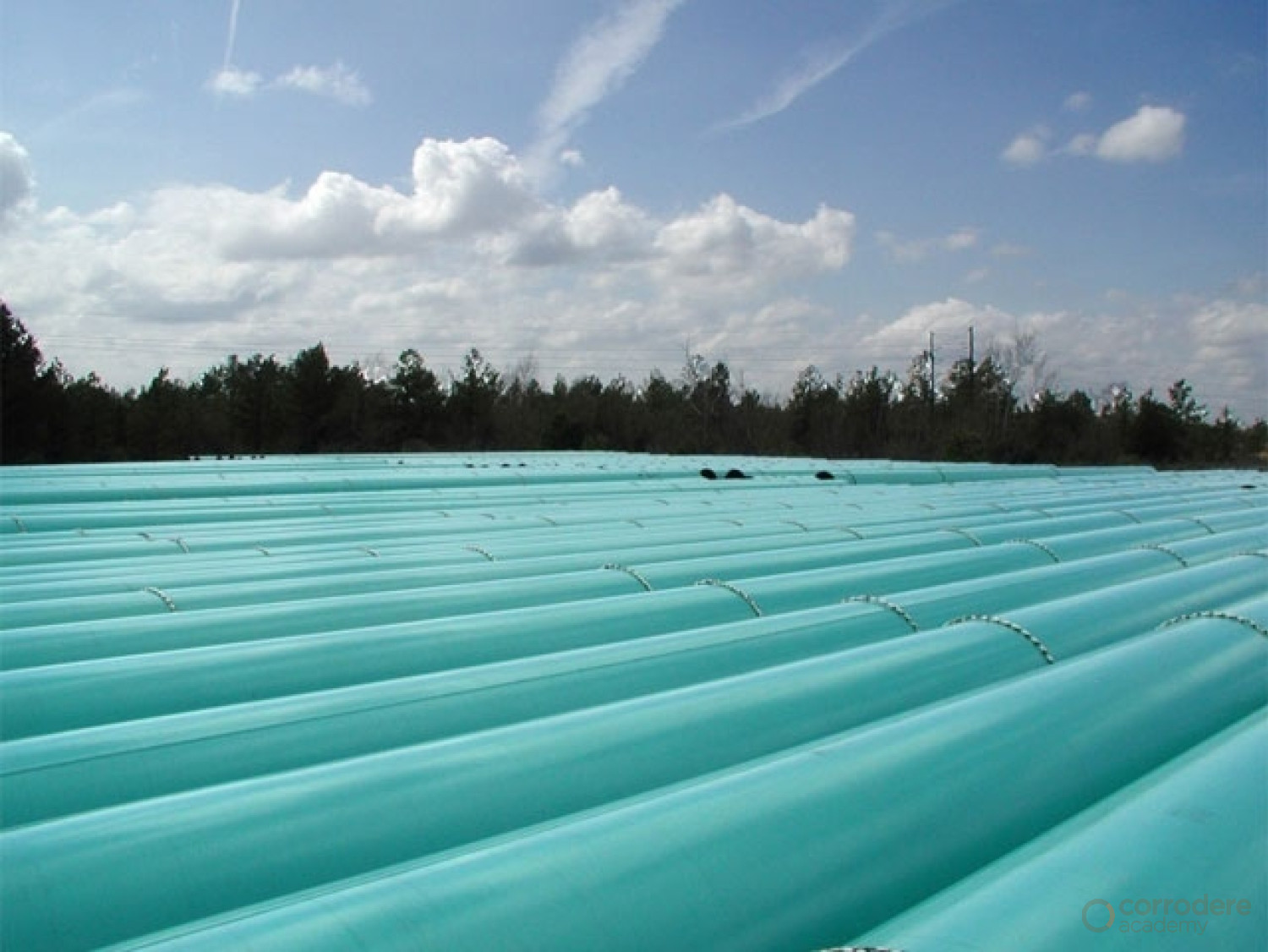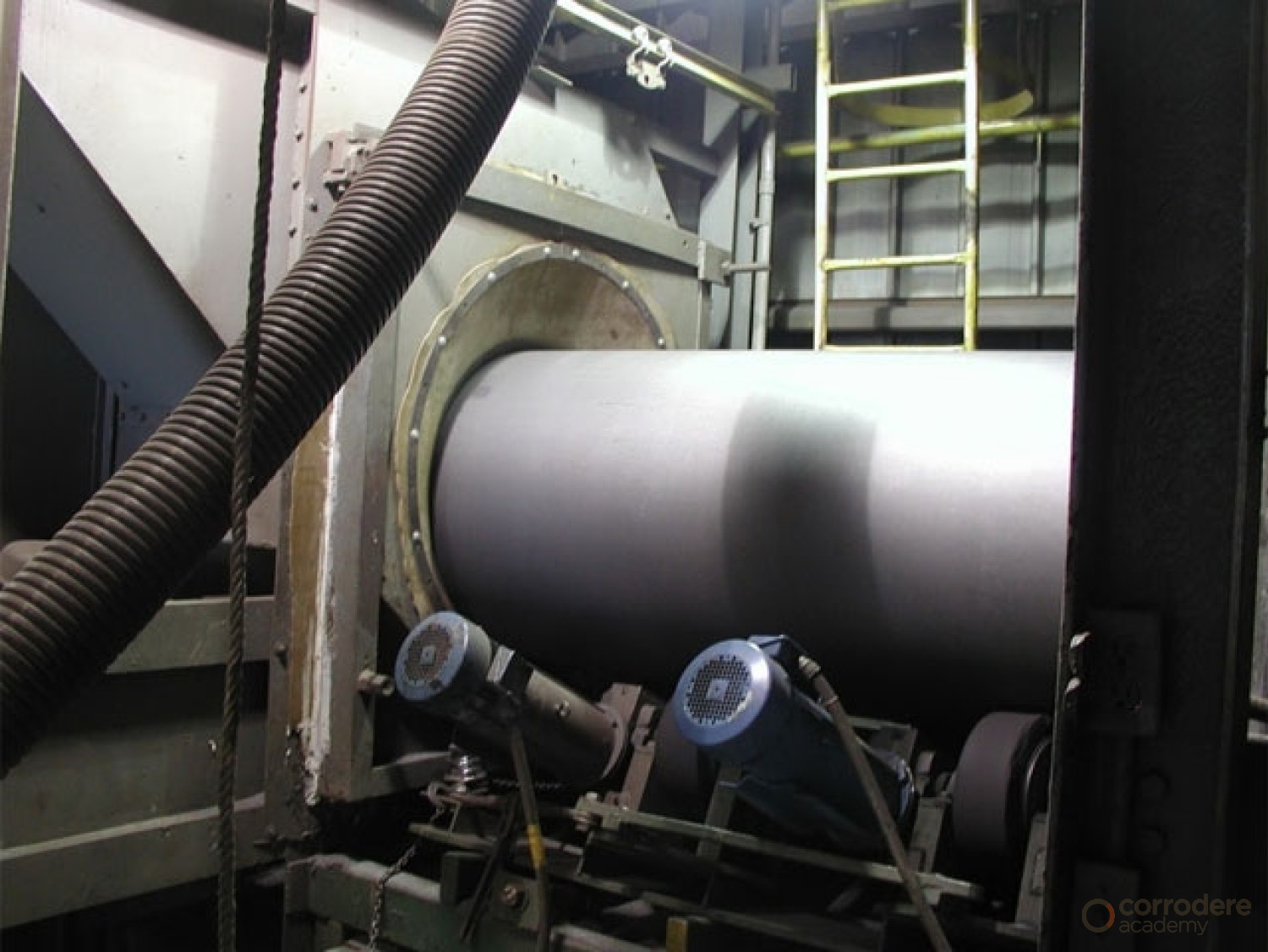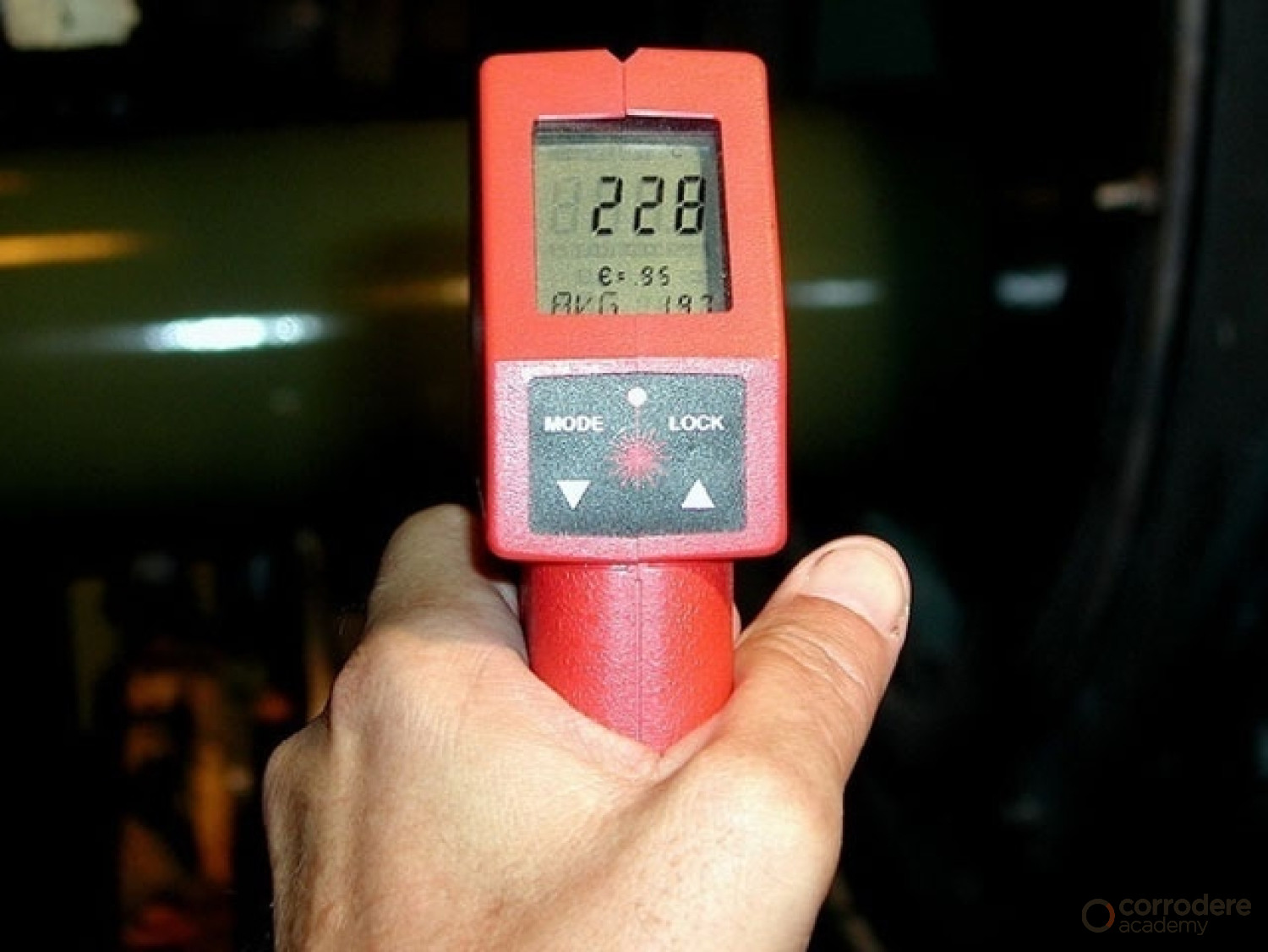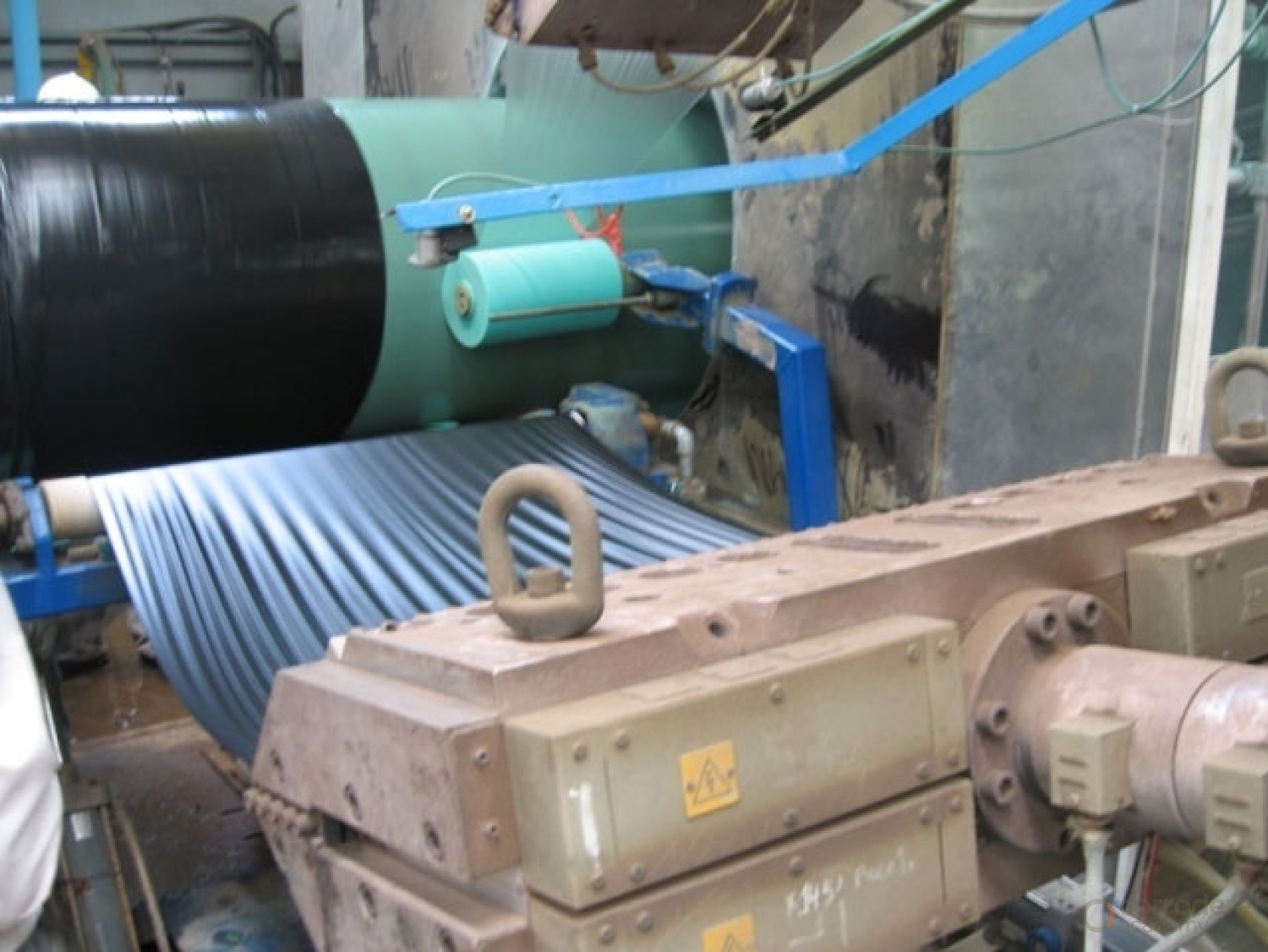Fusion Bonded Epoxy Coatings
Fusion Bonded Epoxy Coatings for Pipeline Protection
Slide /
Learning Outcomes
Upon completion of this module, learners will be able to:
- Understand the use of fusion bonded epoxy coatings used for the protection of steel pipelines
- Describe the sequence of operation for surface preparation, coating application and testing of fusion bonded epoxy coatings
- Explain the application process for fusion bonded epoxy coatings to pipelines, fittings and field joints.
Pipeline Coatings
Pipelines are coated for a number of reasons, which include:
- To provide external protection against corrosion
- Provide protection against soil chemicals and soil bacteria
- Minimize uncoated surface area of exterior of pipeline to reduce installation and operating costs of cathodic protection
- Comply with government regulations
- Provide decoration, corrosion protection and safety colour-coding to above ground lines
- Enhance safety
Introduction
Fusion Bonded epoxy (FBE) Coatings were first used for the protection of pipe in the 1960’s.
When pipe operators started to use FBE the concept was to have one coating on the pipe, bends and field joints – FBE.
The pipeline equipment that cannot be coated with FBE is usually protected with multi-component liquid coatings (MCL) such as epoxy or polyurethane.
MCLs are also used for repairs.
All these coatings are used in conjunction with cathodic protection (CP).
Fusion Bonded Epoxy (FBE)
Fusion bonded epoxies are thermosetting epoxy coatings designed as a corrosion prevention coating for use on underground pipelines.
These coatings are capable of operating up to approx. 110oC (230°F) depending on which grade is chosen, soil type, moisture content, thickness, temperature and other conditions.
Fusion bonded epoxies are a one part, heat curable, thermosetting epoxy utilized for corrosion protection. FBE’s are applied to heated parts in a powder form that rapidly gels from liquid to a solid and has remarkable adhesion to the steel surface.
Fusion Bonded Epoxy Powder Coatings (FBE)
FBE coatings can be used as:
- Mono-layer (single coat) coatings for pipe
- Dual and triple layer coatings
- Coatings for fittings
- Coatings for field joints
- Internal pipe coatings
- The first layer in 3-layer polyolefin pipe coating systems
Standards and Recommended Practices
There are various standards and recommended practices for surface preparation and application of fusion bonded epoxy coatings from the following organizations;
- NACE International
- ASTM International
- ISO
There are also world-wide standards and specific specifications developed by operators and owners of pipelines.
Sequence of Operations for Fusion Bonded Epoxy
A pre-preparation of the bare pipe will take place to check for;
- Chlorides (salts)
- Contaminants such as grease and oils
- Steel quality
- Pipe roundness
- Mechanical Damage
- Beveled edges etc
Pre-cleaning can be done with solvents, water wash, steam clean etc.
Surface Preparation
Achieving the correct degree of surface preparation is extremely important for the FBE to adhere to the substrate, and thus give the required performance over the life-span of the pipeline etc.
There are a number of steps that have to be undertaken in order to achieve satisfactory surface preparation:
Surface Preparation
Abrasive blast cleaning has to be undertaken in order to achieve the required surface cleanliness and the required profile.
The abrasive, usually steel grit, has to be of a hardness capable of ‘cutting’ into the steel substrate in order to achieve the correct profile (peak to valley height).
The profile is usually between 50 and 100 microns (2-4 mils) dependent on the film thickness of the FBE.
Post Blast Inspection
A post blast of the steel structure should be undertaken to check the steel for laminations, slivers, shelling etc.
These items must be removed, typically with the use of hand tools such as a scraper or with the use of a grinder.
There will be specification tolerances when grinding the steel as this could reduce the steel wall thickness.
Re-blasting of the treated area may be necessary.
The coating specification will give exact details on the above.
Surface Preparation
Correct cleanliness of the profiled surface is extremely important.
Usually a surface cleanliness of ISO 8501-1 Sa 2½, SSPC SP 10, Nace International No.2 is specified along with the required surface profile.
The surface profile should not be too low or too high.
The maximum concentration of soluble salts will also be specified and this can vary between owners and operators.
Chromate Treatment
Increased adhesion of the FBE coating to the substrate can usually be achieved by the application of a proprietary chromate solution.
The solution is applied to the heated pipe, just prior to application of the FBE powder.
Note: Chromate is harmful to both the environment and human health.
Heating the Substrate
The cleaned and treated surface is heated to a temperature specified by the coating material manufacturer – usually 190 to 240°C (375oF to 464oF)
Induction heating is normally used to heat pipes.
Cure of the FBE coating is governed by the heat input.
Temperature Measurement
There are a number of ways of measuring pipe/coating temperature including:
- heat sticks (melt crayons)
- hand held, contact thermocouples
- optical pyrometers.
Continuous monitoring and recording of the pipe/coating temperature should be undertaken, usually with optical pyrometers.
FBE Powder Application
- Powder is supplied to electrostatic guns from a fluidized bed
- The powder is attracted to the pipe surface
- The powder melts, flows and cures on the heated pipe
The thickness of the FBE coating is dependent on the specified requirement, but is usually 350 to 500 microns (14 -20 mil)
Quenching of the Pipe and Coating
Following completion of the application of FBE the coated pipe passes into a water quench / cooling process.
When the FBE is below the glass-transition temperature less damage is likely.
The pipe is cooled so that there is no likelihood of injury to personnel and so that inspection of the coating can be easily undertaken.
Inspection and Testing of the FBE Coated Pipe
Following cooling of the pipe a number of tests can be undertaken on the coated pipe or samples:
- holiday detection
- dry film thickness
- X-cut adhesion
- hot water adhesion
- flexibility
- thermal analysis/cure by Differential Scanning Calorimetry
- interface contamination
- the porosity of the coating
- cathodic disbonding resistance
- strain polarization resistance
Holiday Detector
All coatings will be checked for holidays (discontinuities, voids etc.) after the coating has been applied and cooled.
The instrument consists of a source of electricity such as a battery, an exploring electrode and a ground connection from the energy source to the coated substrate.
An audible alarm indicates a current flow through the unit.
The specification will detail the voltage requirements however a rule of thumb is 100 to 125 volts/mil (4 to 5 volts per micron)
Repairs to FBE Coatings
All FBE coating specifications delineate the type of repair materials to be used, and the maximum size of the coating that can be repaired.
The most used type of repair material is a 2-part polyurethane or a 2-part epoxy.
Melt stick repairs are also used.
Surface preparation of both the steel substrate and the FBE must be properly undertaken.
Coating of Fittings by Fluidized Bed Application of FBE
Similar standards of surface preparation to pipe have to be undertaken
Heating is usually undertaken in a soaking oven
In a fluidized bed the FBE powder particles are suspended in air
The pre-heated fitting is lowered into powder bed, the powder melts and flows; the fitting is coated
As the fitting is removed from the bed excess powder is blown off
Complex shapes can be coated with FBE in this way
Field Joint Coating With FBE
The cleaning and coating processes are similar to those undertaken in the coating plant:
- Abrasive blast clean the substrate and roughen the overlap onto the parent FBE coating
- heat the area to be coated with an induction coil
- apply the FBE by specialized rotating application equipment, to the required thickness
- allow to cool
- inspect the coating
- repair any defects
Handling FBE Coated Pipe
FBE can be easily damaged and therefore coated ‘articles’ have to be carefully handled in a factory and on site.
‘Metal to metal’ contact must be avoided. Suitable ‘padding’ must be used for all FBE coated pipe and fittings e.g. neoprene, polypropylene ropes etc.
Dual Layer and Triple Layer FBE
For dual layer systems two different layers of FBE can be applied, usually in a single application booth.
Dual layer FBE systems are available for damage limitation, anti-slip properties, and for high temperature applications.
Triple layer systems are also available.
FBE as the First Layer in 3-Layer Polyolefin Coating Systems
3-layer polyethylene and 3-layer polypropylene coating systems rely on the use of an FBE coating as the first layer to adhere to the substrate.
The second layer is a grafted polyolefin adhesive that reacts with the FBE and mechanically bonds to the third layer, PE or PP.
The principles of cleaning of the substrate and application of the FBE are similar to those for mono-layer FBE coatings. However, the FBE has to be applied at a lower temperature to stop degradation of the polymer adhesive.
Internal Linings
Pipeline are internally lined;
- To protect the pipeline from corrosive contents such as chemicals etc.
- To offer abrasion resistance
- Reduce friction and increase throughput
- Provide protection to the purity of the product
Pipes can be internally lined with fusion bonded epoxy in much the same way as the external coating.
FBE as a Coating for Pipe Internals
There can be a corrosive environment on the internals of some pipes. FBE coatings can be used to as an anti-corrosion coating
Surface preparation and heating requirements are usually similar to the external coating process
Heating can be undertaken by the use of an induction coil or soaking oven
FBE powder can be applied via a lance arrangement.
Sometimes the FBE coating has to be post cured
Fusion Bonded Epoxy
Fusion bonded epoxy coatings have been successfully applied to internal and external of pipelines for many years.
A high standard of surface preparation is required and a correct coating process is essential, which is predominantly an automated process of preparation, heating, coating application and quenching.
The coating can also act as a primer for specialist 2 and 3 layer coating systems.
Summary
In this training unit, we have reviewed the application of fusion bonded epoxy coatings for pipeline protection.
We reviewed the reason why coatings are used both externally and internally on a steel pipe.
We also reviewed the pre-preparation, preparation and post preparation requirements for coating steel pipes.
We discussed the pipe mill process and quality requirements and testing of the finished product.























































